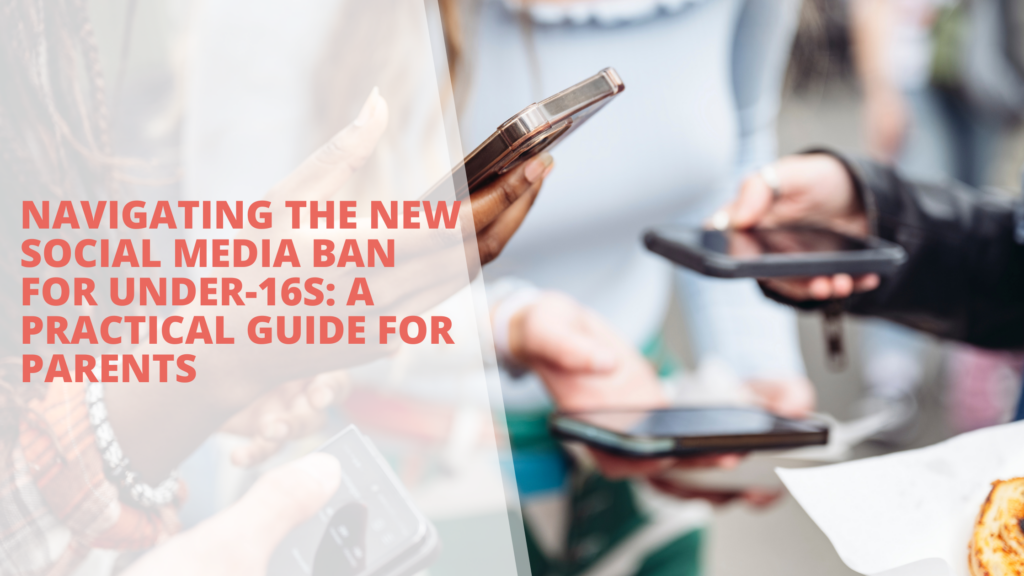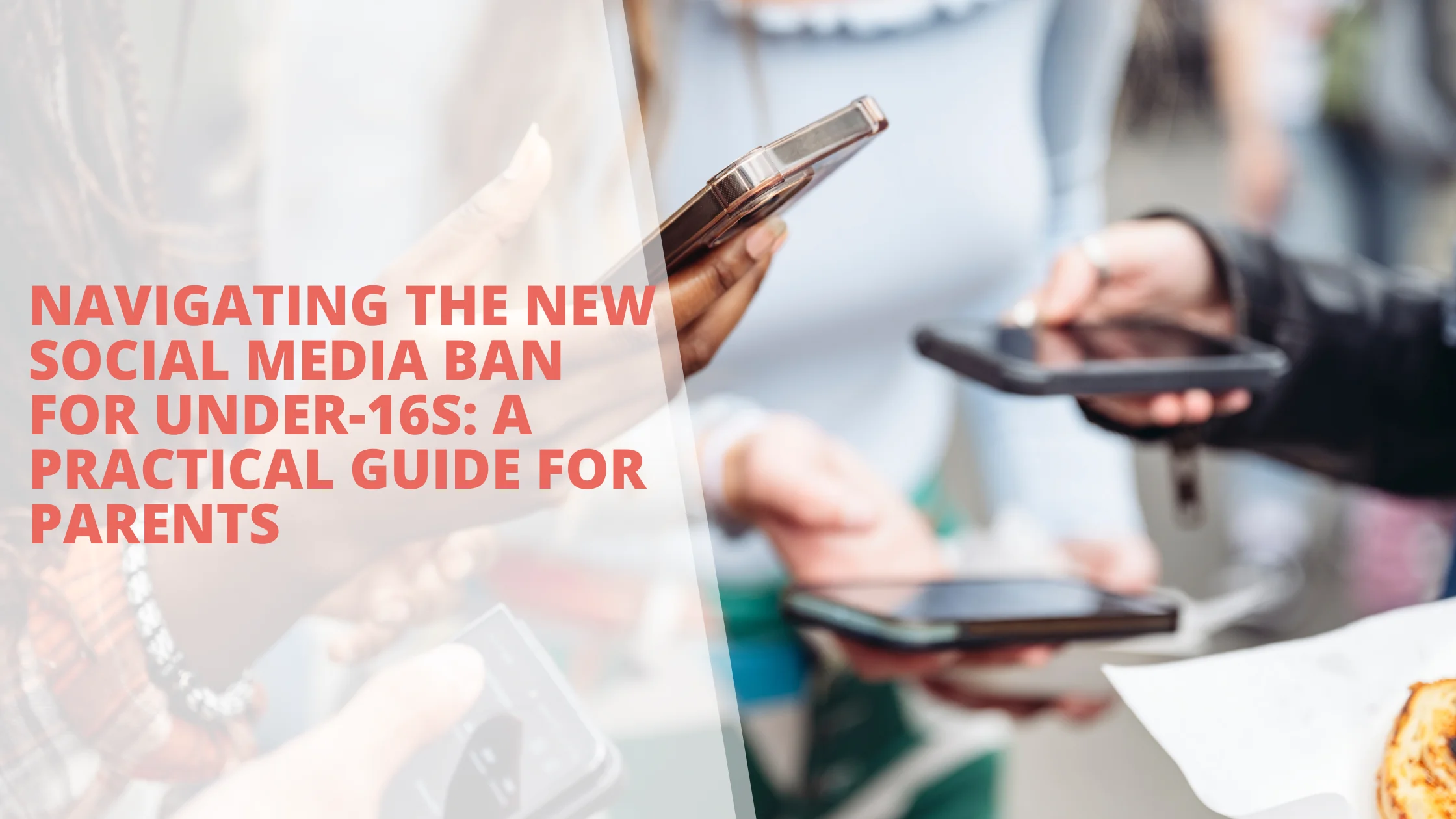
Australia’s recent decision to ban social media access for those under 16 has sparked extensive discussions among parents, children, and family-focused organisations. Whether you’re a parent adapting to this change or an organisational leader supporting families, addressing this topic thoughtfully can help children understand the reasons behind the ban without feeling left out or unfairly restricted. This guide offers five practical approaches for discussing the ban with kids, ensuring the conversation remains balanced and age-appropriate.
As a parent myself, I’ve had multiple conversations with my children on this topic—some calm, others more heated—as they’ve argued their points passionately. While I work in child safety, including online safety, I realised that I only understood one side of the story. I didn’t fully appreciate that for my kids, the fear of missing out (FOMO) isn’t about vanity; it’s a reality of teenage social life today. Social media has become integral to their interactions. Teens create group chats, organise events, and make social plans through these apps, so missing out isn’t just a feeling—it’s a barrier to staying connected. It seems unfair, but it’s a significant part of their world.
In our household, my wife and I have introduced social media and online activity contracts with our children. These agreements outline respectful behaviour, boundaries, and screen time, and we’ve found them valuable for reinforcing expectations. Whenever boundaries are crossed, these contracts provide a reference point for discussion. Our approach may not work for everyone, but it’s been effective for us, especially as we see the darker sides of the internet and social media’s potential harm. My hope is that by opening up these conversations, my kids—and others—will learn to navigate social media in ways that prioritise their safety.
With that said, here’s a guide offering five practical ways to discuss the social media ban with kids, keeping the conversation constructive and age-appropriate.
1. Ask What They Already Know
- Why It’s Helpful: Many children have already heard about the ban from friends, at school, or online. Starting by asking what they know can help you identify any misinformation or address specific concerns.
- How to Approach It: Begin with open-ended questions like, “What have you heard about the new social media rule for kids under 16?” or “What do you think about it?” This gives them space to share their thoughts, fears, or confusion.
- Table Talk Tip: Approach this topic at a relaxed family meal where they can speak freely. Active listening and showing empathy can make a big difference.
2. Present the Facts in an Age-Appropriate Way
- Why It’s Helpful: Kids process information differently based on their age, so a simple explanation may be enough for younger children, while older kids might want more context.
- How to Approach It: For younger kids, you might say, “The new rule means that kids under 16 can’t have social media accounts because it’s supposed to keep kids safe.” For teens, you can introduce additional context on privacy, mental health, and how the law aims to reduce risks. For instance, research from The Conversation points out that the impact of social media on well-being varies but can increase anxiety in some young users, depending on factors like usage patterns and content types. The Conversation: Social Media’s Impact on Young People.
3. Recognise Their Feelings and Validate Them
- Why It’s Helpful: Some children may feel disappointed or left out, especially if their friends have social media access. Recognising these feelings builds trust and shows that you understand their perspective.
- How to Approach It: Simple phrases like “I know it might feel unfair” or “It’s natural to feel disappointed if your friends can still use social media” can help. From there, explore the reasoning behind the decision together.
- Table Talk Tip: Share examples of times you felt restricted but eventually saw the benefit. Creating a space for empathy through family conversations helps children process and accept changes over time.
4. Explore Digital Safety as a Shared Responsibility
- Why It’s Helpful: This law also opens a door for broader discussions about online safety, emphasising that while social media offers benefits, it also has risks.
- How to Approach It: Say something like, “This rule is partly in place because people want to make sure kids are safe online. What are some ways you think being online could be unsafe?” Use examples that they can relate to, such as not sharing personal information with strangers. For an in-depth look, eSafety Commissioner provides guidelines for protecting children and young people online eSafety Commissioner Guide to Online Safety.
- Table Talk Tip: Use analogies, like comparing online spaces to physical spaces, where children understand that boundaries and safeguards are important.
5. Brainstorm Fun Alternatives Together
- Why It’s Helpful: Children are more likely to adapt to new limitations if they feel involved in creating solutions. Since social media provides entertainment and connection, brainstorming new offline activities can fill that gap.
- How to Approach It: Ask questions like, “What are some things you’d like to do more often?” or “Are there offline hobbies or activities you’d love to try?” Emphasise that these ideas aren’t about replacing social media but about exploring new interests.
- Table Talk Tip: Create a family “bucket list” of activities. Plan fun offline activities together, like movie nights or weekend outings. This shows that connection and entertainment are possible without screens.
Resources for Further Reading
- The Guardian – Impact of Social Media on Youth Mental Health: The Guardian on Social Media and Youth
- eSafety Commissioner – Digital Safety for Young People: eSafety Resources
- The Conversation – The Complexity of Social Media’s Effect on Youth: The Conversation on Social Media’s Impact
By starting these conversations at home, you’re not only informing your children but also creating a safe environment for future discussions on complex topics. The Table Talk Project is a fantastic way to maintain an open dialogue and build trust over time, making challenging conversations part of a healthy family culture.


That was a great read Neil, its very practical in our circumstances as there are girls in my 11 year old daughters class that have Tiktok and Snapchat, we have spoken about this with her as she feels very left out as her friends all talk on Snapchat, we will use this article as a tool on our Monday night table talk! Great work! X
Thats great Ryan. I am so glad that this blog can support your conversation. Yes it is difficult when our kids are saying they want this app and they are under age. Our encouragement is you be the parent. You choose your rules in your home. However to remember that children’s brains are not developed yet until they are in their mid twenties and they don’t understand the impact of social media and the dangers surrounding it. Hold off as long as you can.